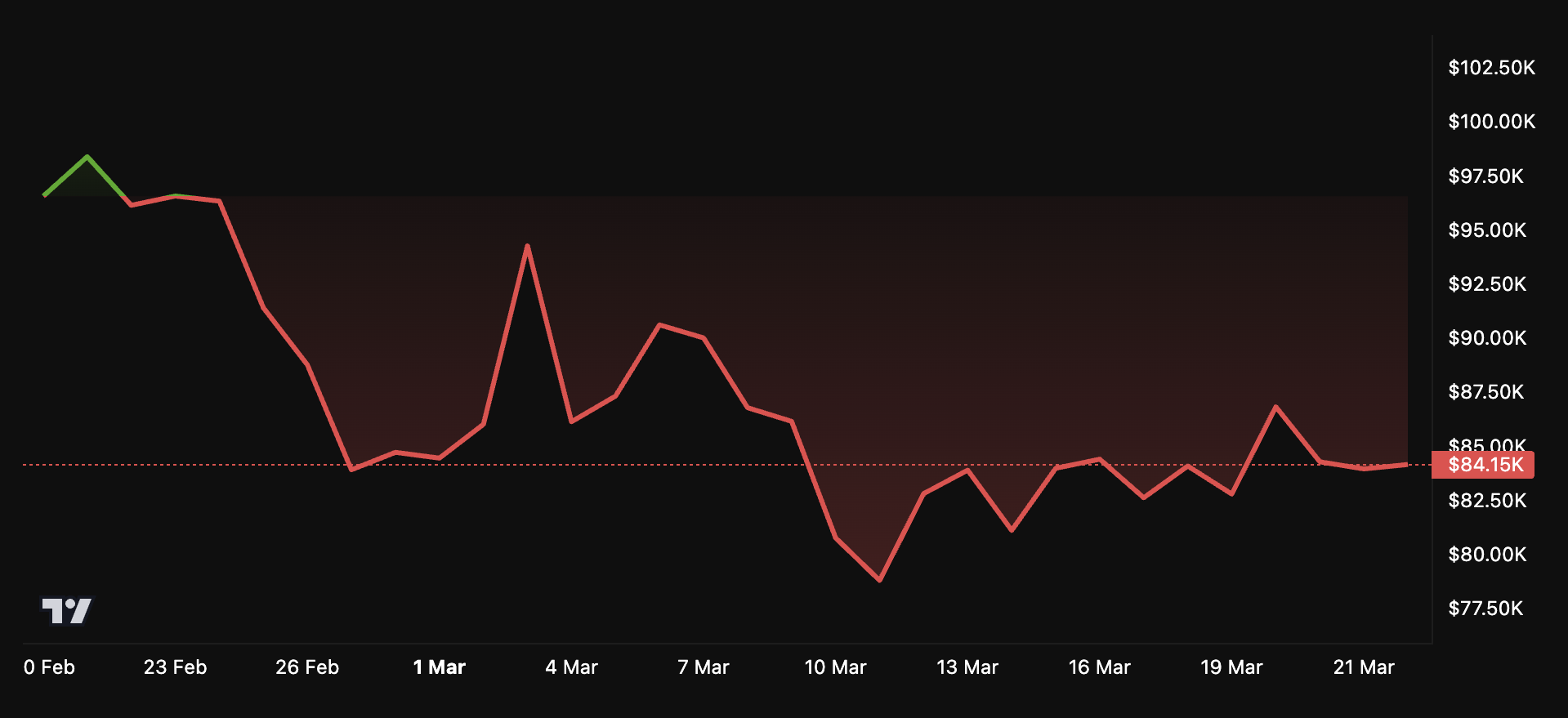Despite the strong performance last year, the market’s volatility has shifted the outlook for Bitcoin exchange-traded funds (ETFs) in 2025. A series of major sell-offs have wiped out nearly all the inflows the ETFs received earlier in 2025.
This downturn coincides with Bitcoin’s continued price decline, leaving the ETFs struggling to maintain their momentum as investor sentiment shifts.
Bitcoin ETFs Face Major Setback in 2025
According to a recent post by Bread & Butter on X (formerly Twitter), Bitcoin ETFs had a promising start to the year. Between January 1 and February 7, they saw cumulative inflows of $5.7 billion.
However, a substantial sell-off quickly followed, erasing $5.3 billion of those gains. As a result, net inflows for the year plunged to a low of $106 million.

In fact, the largest weekly net outflow was recorded in the final week of February, at $2.7 billion. That’s not all. Since the ETFs began trading, they have experienced outflows in three separate months. February stands out as the most significant, with a staggering $3.5 billion recorded as the largest monthly outflow to date.
Nonetheless, the post revealed a positive shift, noting that inflows into Bitcoin ETFs have resumed. Since March 14, the ETFs have recorded consecutive days of inflows, pushing the year-to-date net inflows to over $600 million.
Notably, on March 17, BTC ETFs recorded their highest single-day inflow in 41 days. Amid this renewed momentum, BeInCrypto highlighted that asset managers Fidelity and ARK Invest were acquiring substantial amounts of Bitcoin, contributing to a bullish trend.
As of the latest data, the daily total net inflow reached $165.7 million on March 20. Yet, this growth was uneven across the 11 ETFs.
Only four recorded inflows, with iShares Bitcoin Trust ETF (IBIT), leading at $172.1 million, followed by Fidelity Wise Origin Bitcoin Fund (FBTC) with $9.2 million, Grayscale Bitcoin Mini Trust ETF (BTC) with $5.2 million, and VanEck Bitcoin ETF(HODL) with $11.9 million.

Meanwhile, four ETFs saw zero flows, and three—Grayscale Bitcoin Trust(GBTC), Bitwise Bitcoin ETF (BITB), and Franklin Templeton Digital Holdings Trust (EZBC)—experienced outflows, reflecting a mixed market performance.
“It remains to be seen whether this marks the beginning of a sustained rebound or just a temporary relief,” the post read.
This comes as Bitcoin’s price continues to navigate turbulent waters. The cryptocurrency has faced significant setbacks due to shifting macroeconomic conditions, leading to a notable decline.
According to BeInCrypto data, BTC has depreciated by 12.1% over the past month and 2.0% in the last 24 hours alone. At press time, it was trading at $84,147.

However, analysts suggest that the worst may be over. Arthur Hayes, former CEO of BitMEX, pointed to a potential bullish shift, citing his custom US bank credit supply index, which was moving upwards.
“Doesn’t mean we are done dumping but the odds are shifting more bullish,” he said.
Market observers have also compared Bitcoin to gold. They predict that BTC may follow a similar trajectory and emerge from its current “fakeout” phase. Others believe Bitcoin is in a bear trap that could soon end.
The post Bitcoin ETFs’ 2025 Inflows Undone by $5.3 Billion Sell-Off, Yet Recovery Signs Appear appeared first on BeInCrypto.









